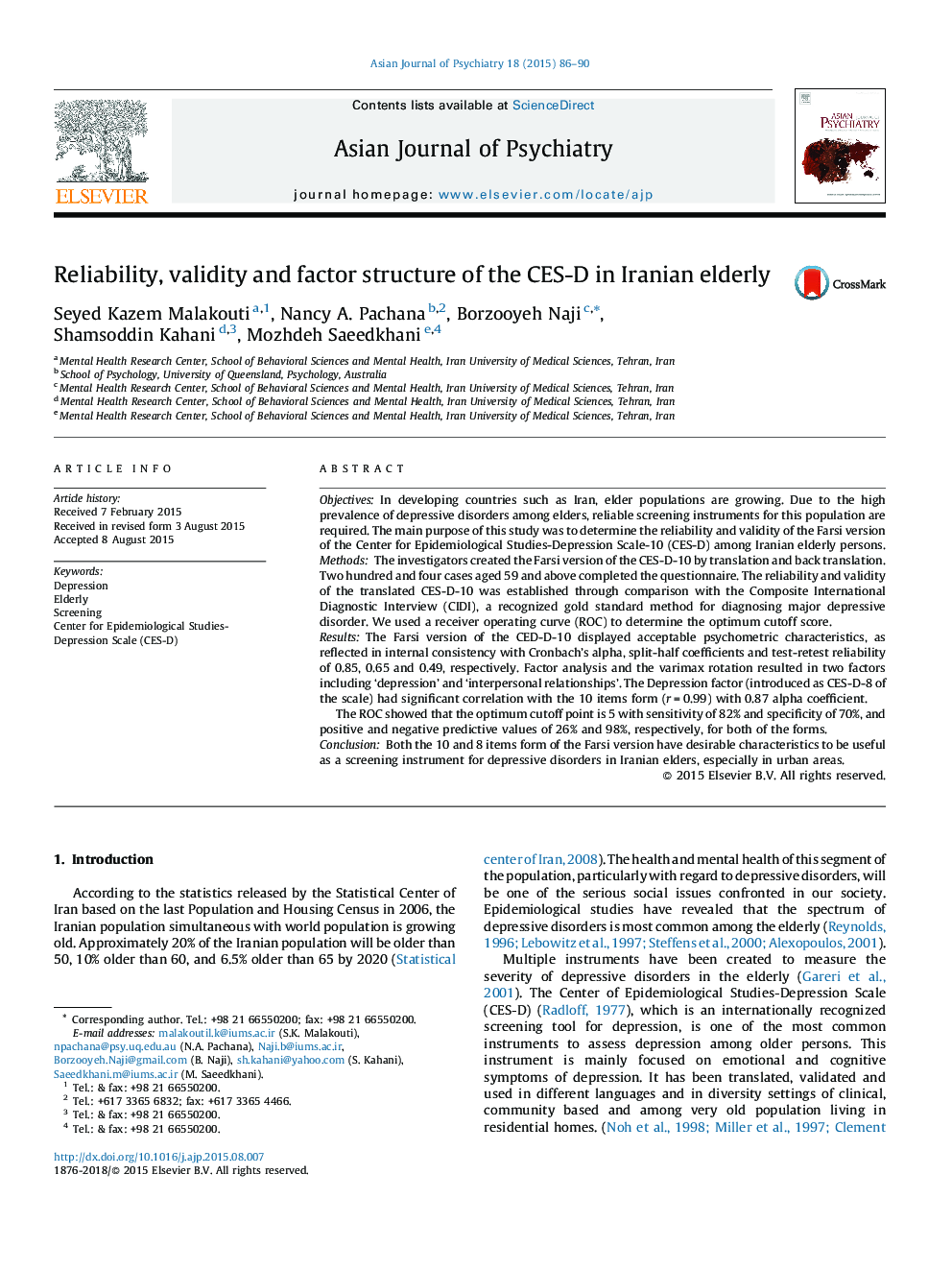| Article ID | Journal | Published Year | Pages | File Type |
|---|---|---|---|---|
| 316903 | Asian Journal of Psychiatry | 2015 | 5 Pages |
•204 cases aged 59 and above completed the Farsi version of the CES-D 10.•Factor analysis resulted in two factors: depression and interpersonal relationships.•The depression factor had significant correlation with the 10 items form.•The ROC showed the best cutoff is 5 with sensitivity and specificity of 82% and 70%.•Both forms of the Farsi version have desirable characteristics to be a screening tool.
ObjectivesIn developing countries such as Iran, elder populations are growing. Due to the high prevalence of depressive disorders among elders, reliable screening instruments for this population are required. The main purpose of this study was to determine the reliability and validity of the Farsi version of the Center for Epidemiological Studies-Depression Scale-10 (CES-D) among Iranian elderly persons.MethodsThe investigators created the Farsi version of the CES-D-10 by translation and back translation. Two hundred and four cases aged 59 and above completed the questionnaire. The reliability and validity of the translated CES-D-10 was established through comparison with the Composite International Diagnostic Interview (CIDI), a recognized gold standard method for diagnosing major depressive disorder. We used a receiver operating curve (ROC) to determine the optimum cutoff score.ResultsThe Farsi version of the CED-D-10 displayed acceptable psychometric characteristics, as reflected in internal consistency with Cronbach's alpha, split-half coefficients and test-retest reliability of 0.85, 0.65 and 0.49, respectively. Factor analysis and the varimax rotation resulted in two factors including ‘depression’ and ‘interpersonal relationships’. The Depression factor (introduced as CES-D-8 of the scale) had significant correlation with the 10 items form (r = 0.99) with 0.87 alpha coefficient.The ROC showed that the optimum cutoff point is 5 with sensitivity of 82% and specificity of 70%, and positive and negative predictive values of 26% and 98%, respectively, for both of the forms.ConclusionBoth the 10 and 8 items form of the Farsi version have desirable characteristics to be useful as a screening instrument for depressive disorders in Iranian elders, especially in urban areas.
